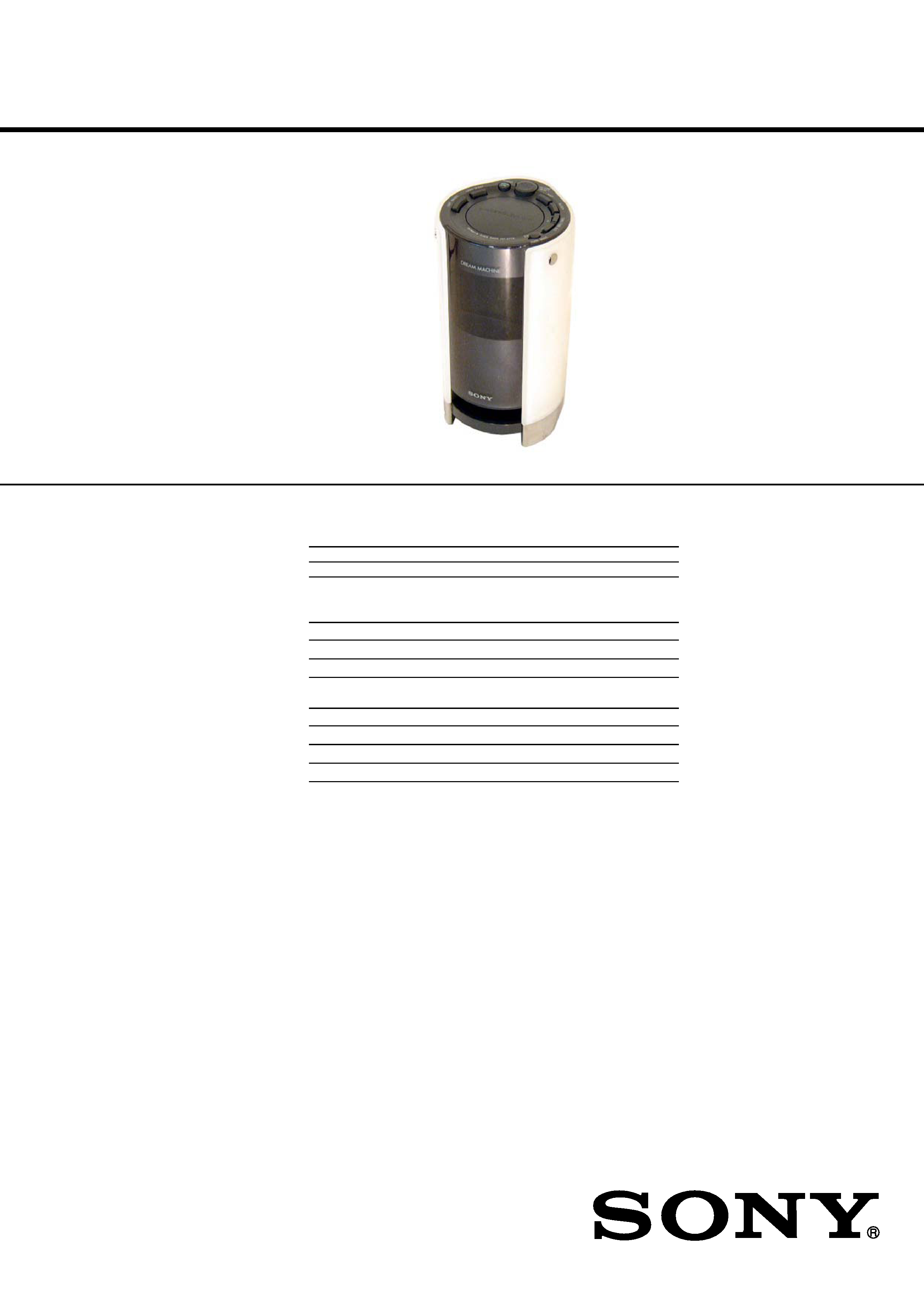
ICF-C773/C773L
SERVICE MANUAL
ICF-773
FM/AM PLL SYNTHESIZED CLOCK RADIO
ICF-773L
FM/MW/LW PLL SYNTHESIZED CLOCK RADIO
SPECIFICATIONS
US Model
Canadian Model
ICF-C773
AEP Model
ICF-C773/C773L
UK Model
ICF-C773L
Ver. 1.0 2005.04
9-879-611-01
2005D02-1
© 2005.04
Sony Corporation
Personal Audio Group
Published by Sony Engineering Corporation
Time display
UK, North and South America
12-hour system
Other countries/regions
24-hour system
Frequency range
Model for North and South America
Band
ICF-C773
Channel step
FM
87.5 - 108 MHz
0.1 MHz
AM
530 - 1710 kHz
10 kHz
Model for other countries/regions
Band
ICF-C773
ICF-C773L
Channel step
FM
87.5 - 108 MHz
87.5 - 108 MHz
0.05 MHz
AM (MW)
531 - 1602 kHz
531 - 1602 kHz
9 kHz
LW
--
153 - 279 kHz
3 kHz
Speaker
Approx. 4.5 cm (1 13/16 inches) dia. 8
Power output
150 mW (at 10 % harmonic distortion)
Power requirements
North and South American model: 120 V AC, 60 Hz
Other model: 230 V AC, 50 Hz
Dimensions
Approx. 90
× 169.5 × 94 mm (w/h/d)
(3 5/8
× 6 3/
4
× 3 3/
4 inches) including projecting parts and
controls
Mass
Approx. 640 g (1 lb 6.6 oz)
Approx. 710 g (1 lb 9.1 oz): ICF-C773L (UK model)
Design and specifications are subject to change without notice.
Photo : ICF-C773L
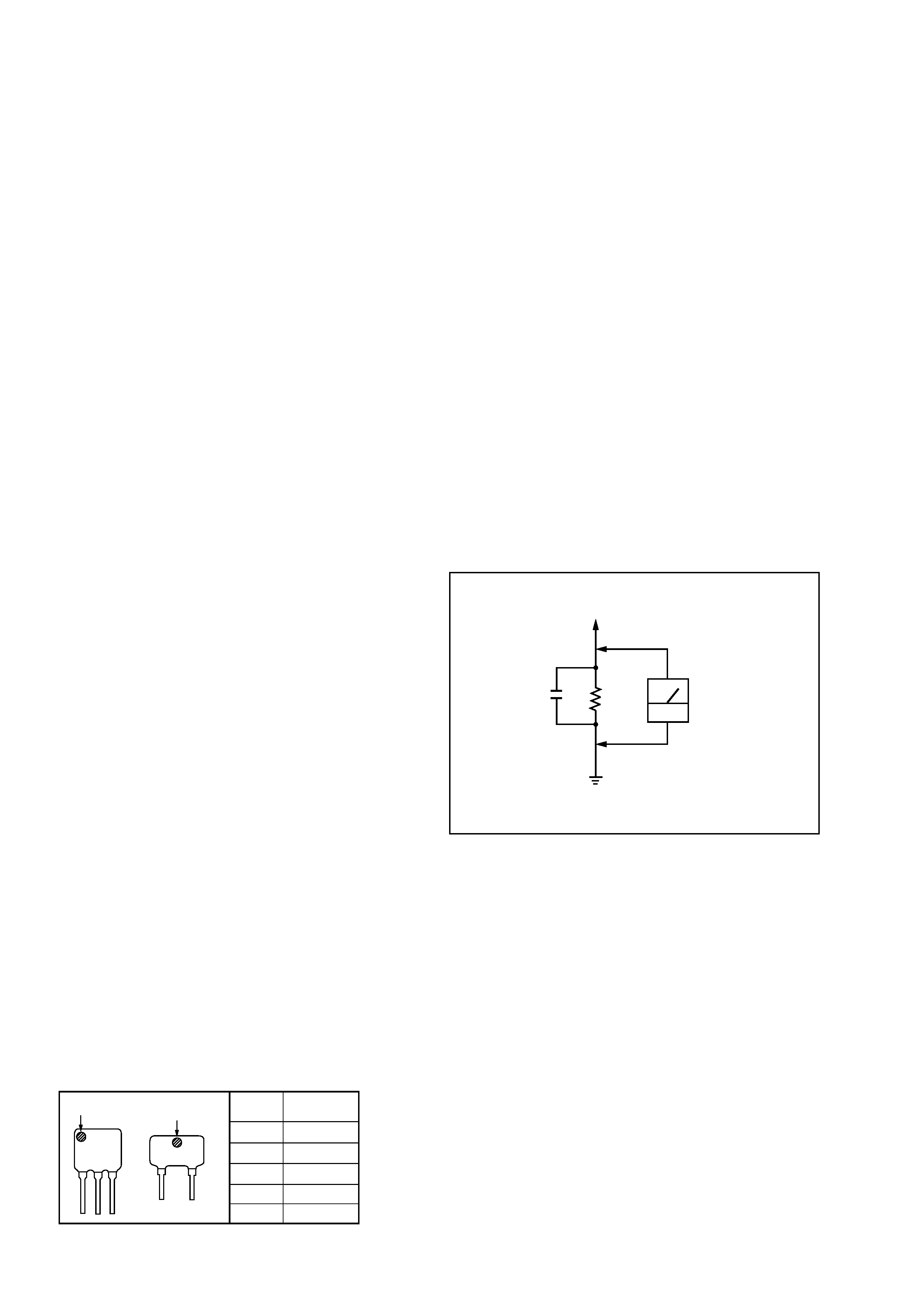
ICF-C773/C773L
2
TABLE OF CONTENTS
Specifications ............................................................................
1
1. GENERAL
Location and Function of Controls ..................................
3
2.
DISASSEMBLY
2-1. Disassembly Flow ..................................................
4
2-2
Cabinet (Lower). ....................................................
4
2-3. Power Board ...........................................................
5
2-4. Foot Sub Assy ........................................................
5
2-5. Cabinet (Rear) Sub Assy ........................................
6
2-6. Side Panel (L), Side Panel (R) ...............................
6
2-7. Cabinet (Front) Sub Assy .......................................
7
2-8. Reflector (L), Reflector (R) ...................................
7
2-9. LCD Board .............................................................
8
3-10. Main Board ............................................................
8
3. ELECTRICAL ADJUSTMENTS ............................... 9
4. DIAGRAMS
4-1. Printed Wiring Board Main section .................. 11
4-2. Schematic Diagram
Main Board (US/CND, IT) (1/2) section ........... 12
4-3. Schematic Diagram
Main Board (US/CND, IT) (2/2) section ........... 13
4-4. Schematic Diagram
Main Board (AEP/UK) (1/2) section ................. 14
4-5. Schematic Diagram
Main Board (AEP/UK) (2/2) section ................. 15
4-6. Printed Wiring Board Key, LCD Board section 16
4-7. Schematic Diagram Key, LCD Board section .. 17
4-8. Printed Wiring Board Power Board ................. 18
4-9. Schematic Diagram Power Board .................... 19
4-10. Circuit Board Location ........................................... 20
4-11. IC Pin Function Descriptions ................................. 22
5. EXPLODED VIEW ..................................................... 23
6. ELECTRICAL PARTS LIST ................................... 25
SAFETY-RELATED COMPONENT WARNING!!
COMPONENTS IDENTIFIED BY MARK 0 OR DOTTED LINE WITH
MARK 0 ON THE SCHEMATIC DIAGRAMS AND IN THE PARTS
LIST ARE CRITICAL TO SAFE OPERATION.
REPLACE THESE COMPONENTS WITH SONY PARTS WHOSE
PART NUMBERS APPEAR AS SHOWN IN THIS MANUAL OR IN
SUPPLEMENTS PUBLISHED BY SONY.
· HOW TO CHANGE THE CERAMIC FILTER
This model is used two ceramic filters of CF2 and CF3.
You must use same type of color marked ceramic filters in
order to meet same specifications.
Therefore, the ceramic filter must change two pieces together
since it's supply two pieces in package as a spare parts.
SAFETY CHECK-OUT
After correcting the original service problem, perform the following
safety checks before releasing the set to the customer:
Check the antenna terminals, metal trim, "metallized" knobs, screws,
and all other exposed metal parts for AC leakage. Check leakage as
described below.
LEAKAGE
The AC leakage from any exposed metal part to earth Ground and
from all exposed metal parts to any exposed metal part having a
return to chassis, must not exceed 0.5 mA (500 microampers).
Leakage current can be measured by any one of three methods.
1. A commercial leakage tester, such as the Simpson 229 or RCA
WT-540A. Follow the manufacturers' instructions to use these
instruments.
2. A battery-operated AC milliammeter. The Data Precision 245
digital multimeter is suitable for this job.
3. Measuring the voltage drop across a resistor by means of a
VOM or battery-operated AC voltmeter. The "limit" indication
is 0.75 V, so analog meters must have an accurate low-voltage
scale. The Simpson 250 and Sanwa SH-63Trd are examples
of a passive VOM that is suitable. Nearly all battery operated
digital multimeters that have a 2V AC range are suitable. (See
Fig. A)
Fig. A. Using an AC voltmeter to check AC leakage.
ATTENTION AU COMPOSANT AYANT RAPPORT
À LA SÉCURITÉ!!
LES COMPOSANTS IDENTIFIÉS PAR UNE MARQUE 0 SUR LES
DIAGRAMMES SCHÉMATIQUES ET LA LISTE DES PIÈCES
SONT CRITIQUES POUR LA SÉCURITÉ DE FONCTIONNEMENT.
NE REMPLACER CES COMPOSANTS QUE PAR DES PIÈCES
SONY DONT LES NUMÉROS SONT DONNÉS DANS CE MANUEL
OU DANS LES SUPPLÉMENTS PUBLIÉS PAR SONY.
0.15
µF
To Exposed Metal
Parts on Set
1.5k
AC
voltmeter
(0.75V)
Earth Ground
mark
mark
CF3
CF2
no mark
blue
orange
black
white
10.70MHz
10.67MHz
10.73MHz
10.64MHz
10.76MHz
Mark
Center
frequency
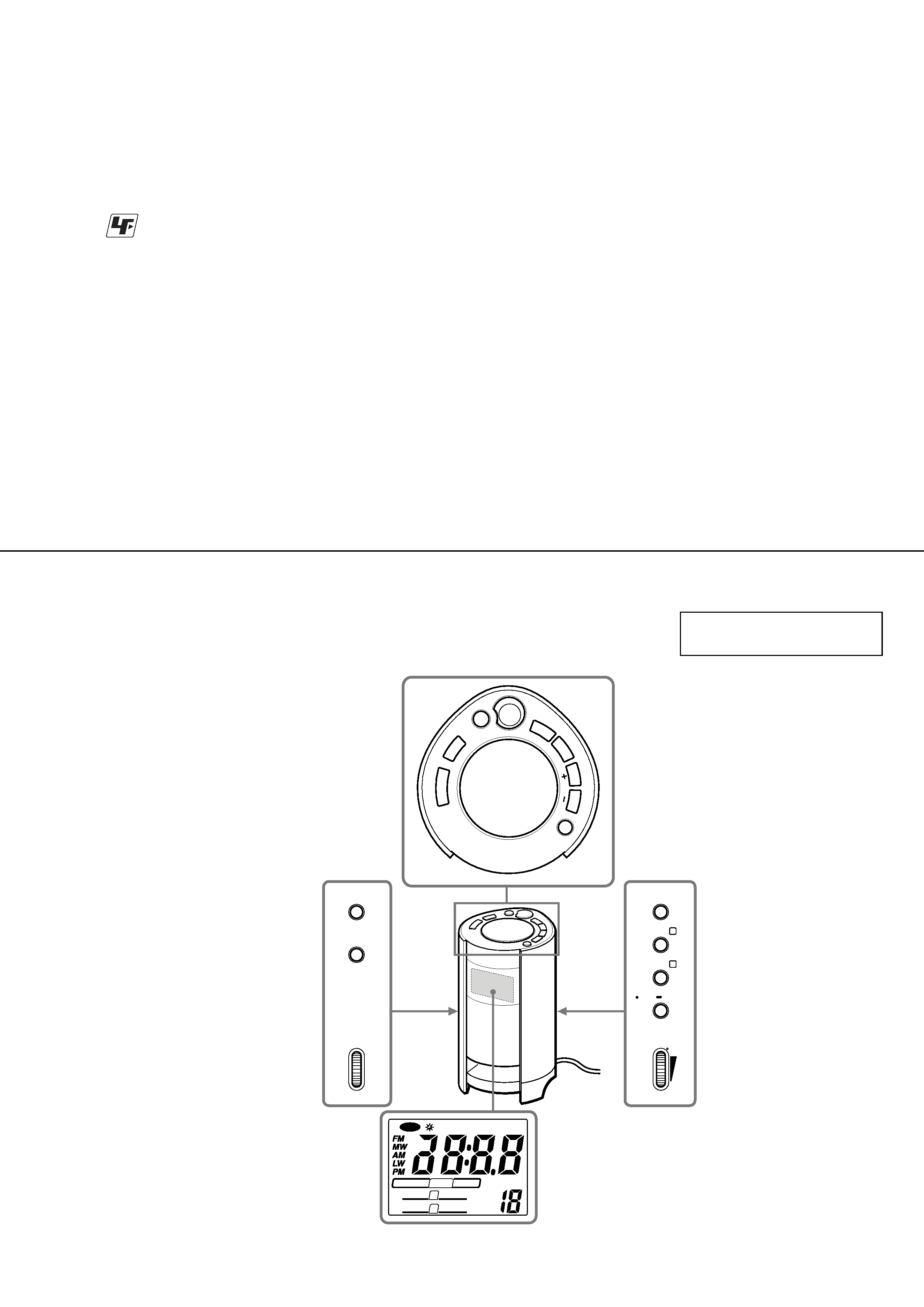
ICF-C773/C773L
3
SECTION 1
GENERAL
LOCATION AND FUNCTION OF CONTROLS
This section is extracted from
instruction manual.
LIGHT
STANDBY
LIGHT
CONTROL
BRIGHTNESS
HIGH
LOW
TU
N
E
M
O
D
E
L
IG
H
T
O
N
/O
F
F
L
IG
H
T
SL
EE
P
NA
P
SL
E
E
P
T
U
N
E
/T
IM
E
S
E
T
WAKE UP
PRESET
RADIO
SLEEP
MHzkHz
STANDBY
RADIO A SOUND
LIGHT SLEEP
RADIO B SOUND
NAP
ALARM MODE
VOLUME
D.T.S./
CLOCK
ALARM B
ALARM A
BAND
ALARM
RESET
RADIO
OFF
RADIO
ON
EN
TE
R
* There is a tactile dot beside VOLUME to show the direction to turn up the volume.
AC power cord
*
Unleaded solder
Boards requiring use of unleaded solder are printed with the lead
free mark (LF) indicating the solder contains no lead.
(Caution: Some printed circuit boards may not come printed with
the lead free mark due to their particular size.)
: LEAD FREE MARK
Unleaded solder has the following characteristics.
·Unleaded solder melts at a temperature about 40
°C higher than
ordinary solder.
Ordinary soldering irons can be used but the iron tip has to be
applied to the solder joint for a slightly longer time.
Soldering irons using a temperature regulator should be set to
about 350
°C.
Caution: The printed pattern (copper foil) may peel away if
the heated tip is applied for too long, so be careful!
· Strong viscosity
Unleaded solder is more viscous (sticky, less prone to flow)
than ordinary solder so use caution not to let solder bridges
occur such as on IC pins, etc.
· Usable with ordinary solder
It is best to use only unleaded solder but unleaded solder may
also be added to ordinary solder.
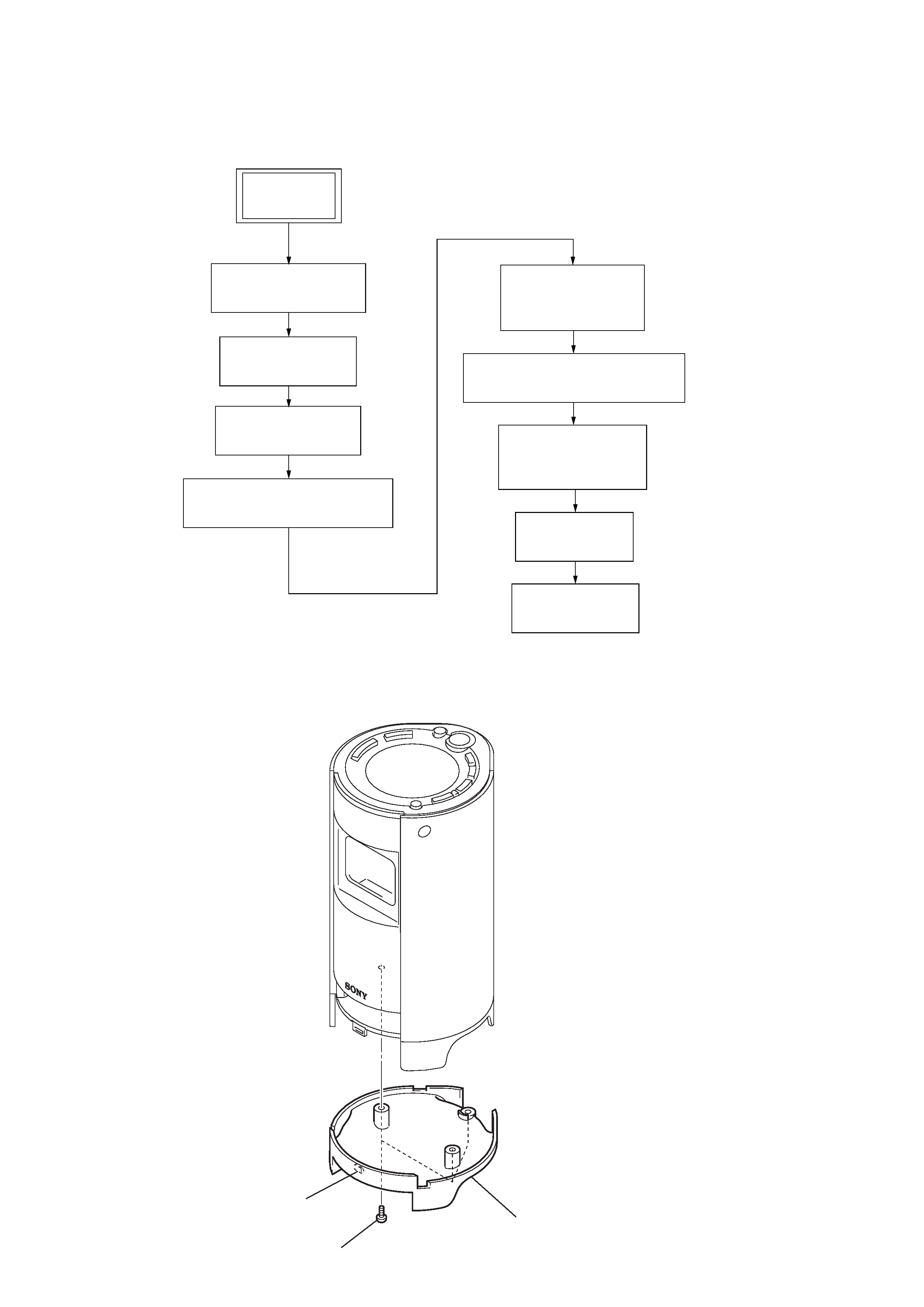
4
ICF-C773/C773L
SECTION 2
DISASSEMBLY
· This set can be disassembled in the order shown below.
2-4. FOOT SUB ASSY
(Page 5)
2-6. SIDE PANEL (L),
SIDE PANEL (R)
(Page 6)
2-3. POWER BOARD
(Page 5)
2-9. LCD BOARD
(Page 8)
2-10. MAIN BOARD
(Page 8)
2-2. CABINET (LOWER)
(Page 4)
2-5. CABINET (REAR) SUB ASSY
(Page 6)
2-7. CABINET (FRONT) SUB ASSY
(Page 7)
2-8. REFLECTOR (L),
REFLECTOR (R)
(Page 7)
SET
2-1. DISASSEMBLY FLOW
Note: Follow the disassembly procedure in the numerical order given.
2-2. CABINET (LOWER)
1
three screws (B2.6)
2
claw
3
cabinet (lower)
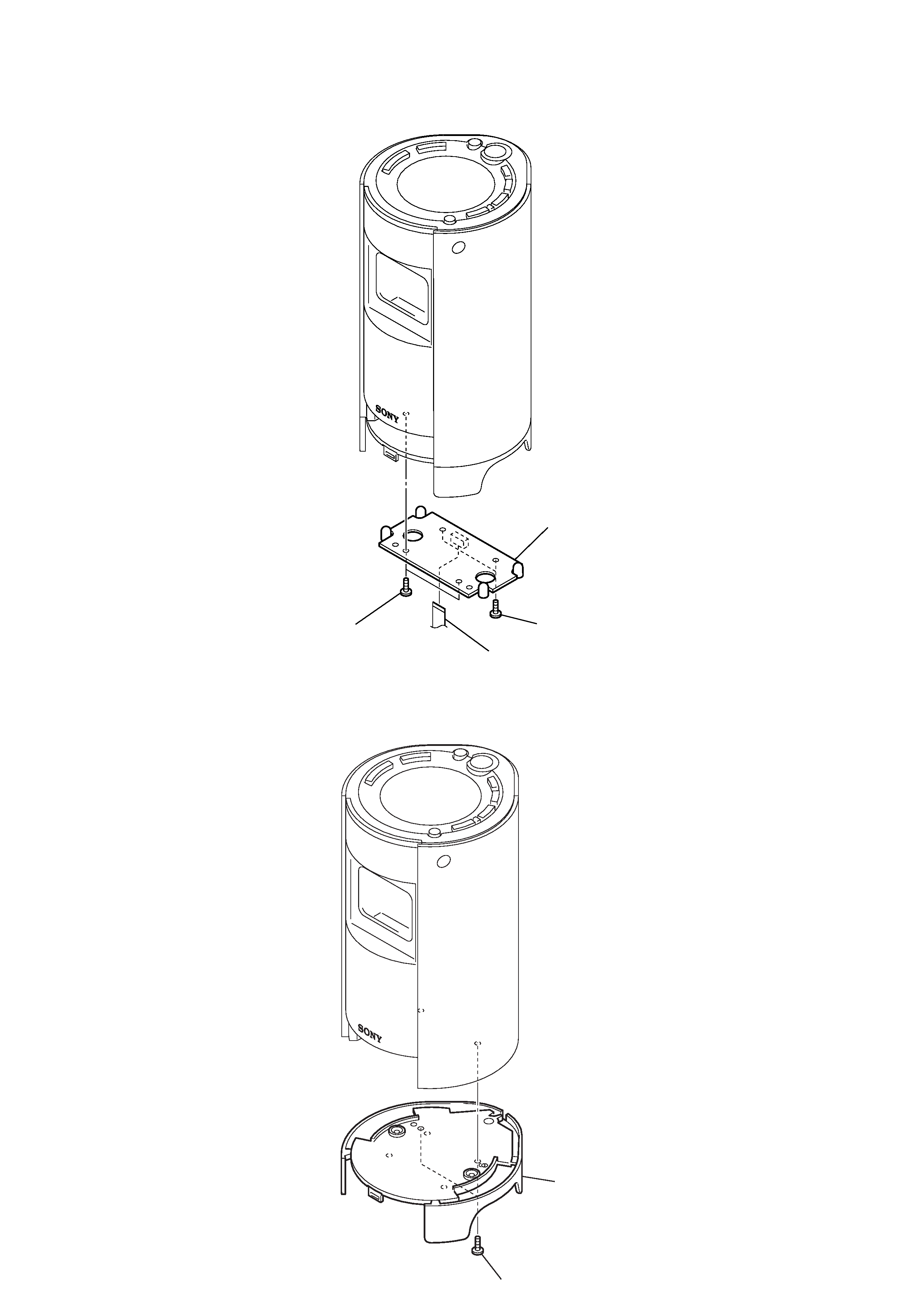
5
ICF-C773/C773L
2-3. POWER BOARD
1
flat wire (CN401)
2
two screws
3
two screws
4
POWER board
2-4. FOOT SUB ASSY
1
two screws
2
foot sub assy
